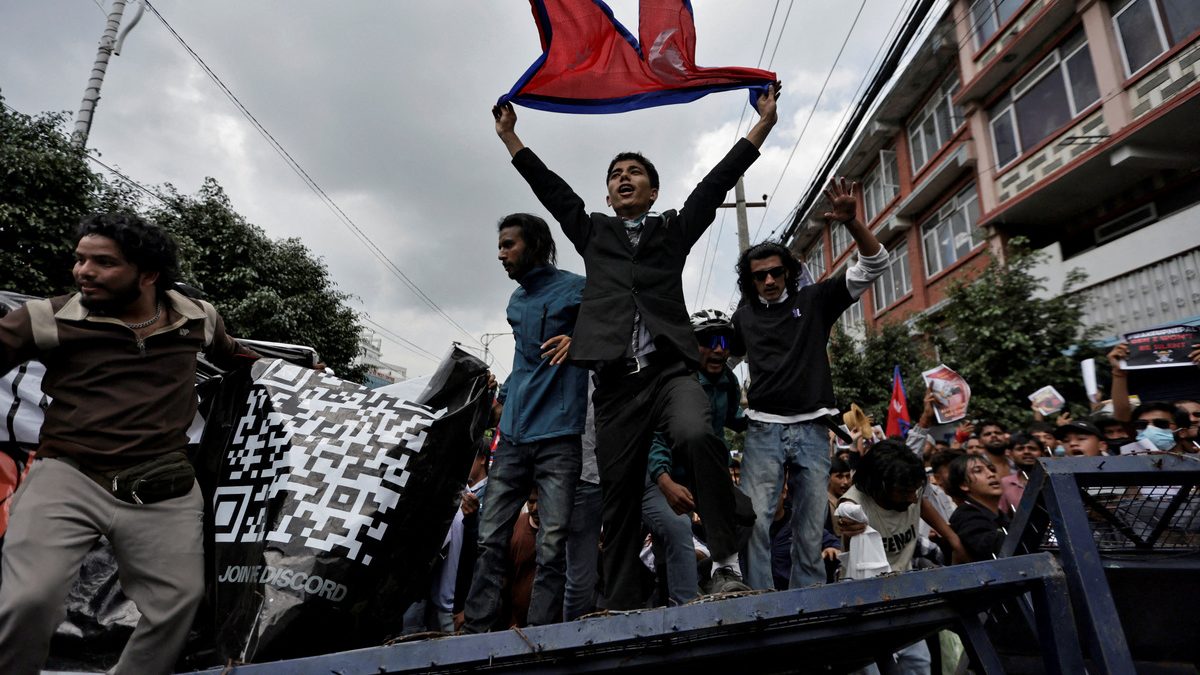Gen-Z protests in Nepal spiraled into violence for a second straight day on Tuesday (Sept 9), as demonstrators torched the homes of top political leaders, including Prime Minister KP Oli and Communication Minister Prithvi Subba Gurung.
The unrest first flared on Monday when protesters stormed President Ram Chandra Paudel’s residence and set parts of it ablaze. Viral videos showed flames consuming sections of the compound as crowds ransacked it.
Among the residences attacked were those of Sher Bahadur Deuba, leader of the Nepali Congress; President Paudel; Home Minister Ramesh Lekhak; and Pushpa Kamal Dahal, chief of the Communist Party of Nepal (Maoist). A private school owned by Deuba’s wife, Foreign Minister Arzu Deuba Rana, was also set on fire.
#WATCH | Nepal: Violence erupts during protests in Kathmandu, as protesters demonstrate against alleged corruption. Protesters pelt stones at security personnel here, Police use tear gas shells to disperse them. pic.twitter.com/0KKko0O1Z8
— ANI (@ANI) September 9, 2025
On both days, protesters blocked roads, burned tyres, and clashed with police. Their anger stems from the Oli government’s decision to ban 26 social media platforms, including Facebook, Instagram, WhatsApp, YouTube, and X. Although the ban was lifted early Tuesday, demonstrations continued across Kathmandu and other cities.
#WATCH | Nepal: Protesters chase and pelt stones at security personnel in Kathmandu, as the demonstrations turn violent.
— ANI (@ANI) September 9, 2025
Protesters are demonstrating against alleged corruption. pic.twitter.com/v4BYEd03Xe
Impact Shorts
More ShortsAuthorities imposed an indefinite curfew in Kathmandu, shut schools, and deployed heavy security. Despite this, large crowds gathered outside Parliament, chanting: “Punish the murderers in government. Stop killing children.” Police opened fire on Monday’s demonstrators, leaving at least 19 dead and dozens more wounded.
“We are here to protest because our youths and friends are getting killed,” said protester Narayan Acharya. “K.P. Oli should be chased away.”
Hospitals in Kathmandu reported treating scores of injured protesters, many with gunshot wounds to the head and chest. “Many of them are in serious condition,” said Dr. Badri Risa of the National Trauma Center, which received seven of the dead. Families waited anxiously outside emergency wards, while long queues formed at blood donation drives.
In response, Oli announced a 15-day inquiry committee, compensation for victims’ families, and free treatment for the injured. Home Minister Lekhak resigned late Monday during an emergency Cabinet meeting.
The protests reflect wider frustration with Nepal’s political class, which many accuse of corruption and mismanagement. The government is also pushing a controversial social media regulation bill requiring platforms to register locally and appoint representatives—critics say it’s a thinly veiled attempt at censorship.
Last week, two dozen platforms were ordered to comply. TikTok, Viber, and three others remained online after registering, while Facebook, Instagram, WhatsApp, YouTube, and X were blocked until the ban was lifted. Nepal had earlier banned TikTok in 2023 for “disrupting social harmony,” before restoring it a year later under stricter conditions.


)

)
)
)
)
)
)
)
)



